Click to watch four minute video presentation of the rainfall and temperature forecast for June to Aug 2018.
Jun-Aug 2018 rainfall outlook:
Drier than average three months likely for eastern Australia
THE months from July to September are likely to be drier than average in northern and eastern mainland Australia this year, according to the Bureau of Meteorology’s latest three monthly seasonal climate outlook statement released today.
Historical outlook accuracy for July to September is moderate over most of Australia, except along the WA border and across most of the far north, where accuracy is low to very low.
The Bureau’s climate model indicates that the El Niño–Southern Oscillation and the Indian Ocean Dipole are forecast to remain neutral for the rest of winter and thus have less influence on Australia’s climate. While the Bureau’s model suggests neutral ENSO is likely, five of eight international models suggest El Niño may develop in spring.
The Bureau’s climate model is forecasting higher than average pressure to the south of Australia during the July to September period. This may weaken westerlies and result in fewer cold fronts extending into southeast Australia.
In addition to the natural drivers such as the El Niño–Southern Oscillation (ENSO) and the IOD, Australian climate patterns are also being influenced by the long-term increasing trend in global air and ocean temperatures. For instance, southern Australia has seen a slow southward shift in autumn/winter frontal systems over the past three decades.
Chance of exceeding 50mm for July-Sep:
July 2018 rainfall outlook:
Aug 2018 rainfall outlook:
Warmer July to September days likely for northern and eastern Australia
July to September days are likely to be warmer than average for most of Australia. Chances are highest (greater than 80%) over Tasmania, central and eastern Victoria, eastern NSW and in southeast Queensland.
Nights in July to September are likely to be warmer than average for most of Australia, except the tropical north. Chances of warmer nights exceed 80% in Tasmania, and along the NSW and Victorian coasts.
Historical accuracy for July to September maximum temperatures is moderate to high for most of Australia. Minimum temperature accuracy for July to September is moderate aross the northern half of Australia and Tasmania. Elsewhere, accuracy is low to very low.
Minimum temperature outlook:
Maximum temperature outlook:
Source: Bureau of Meteorology
Comparison – previous forecast versus actual rainfall
Maps below compare BOM’s rainfall forecast for March 2018 to May 2018, issued in late February 2018, with actual rainfall deciles recorded over the March-May 2018 period.
FORECAST MEDIAN RAINFALL MARCH-MAY 2018:
RAINFALL DECILES RECORDED MARCH-MAY 2018:
Source: Bureau of Meteorology

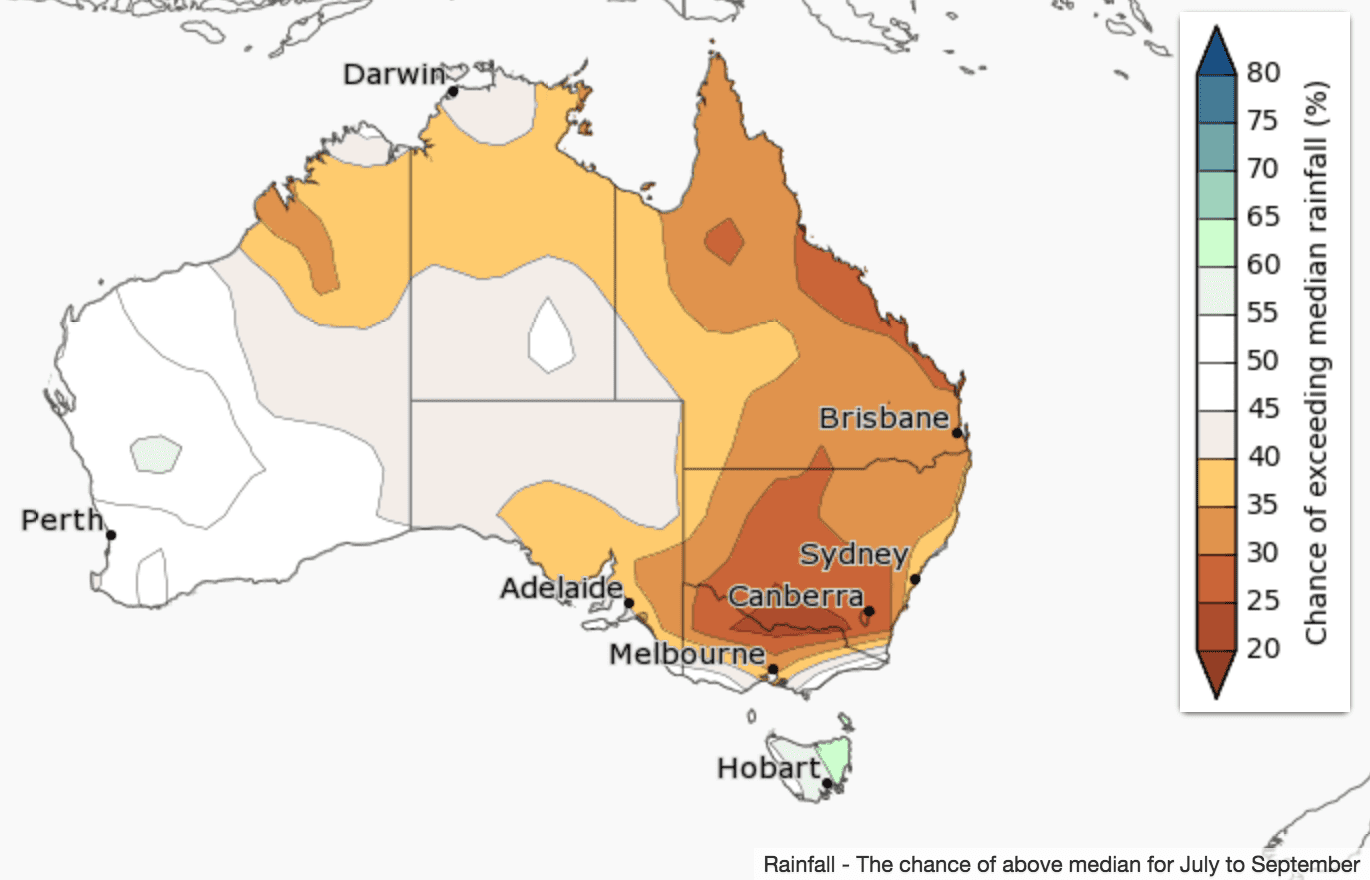
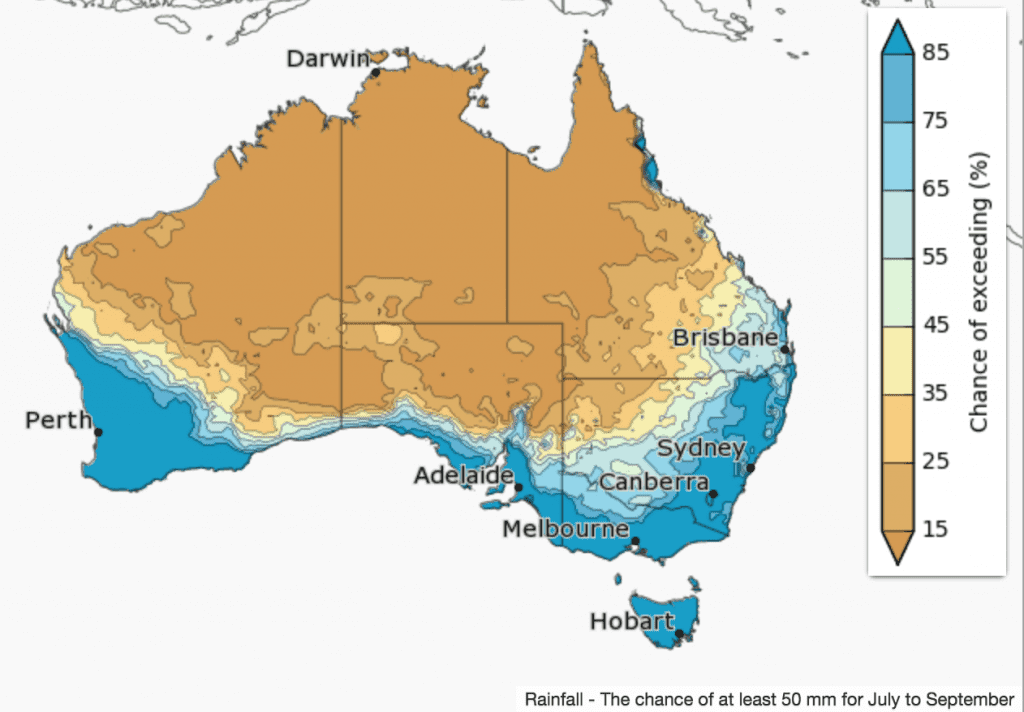
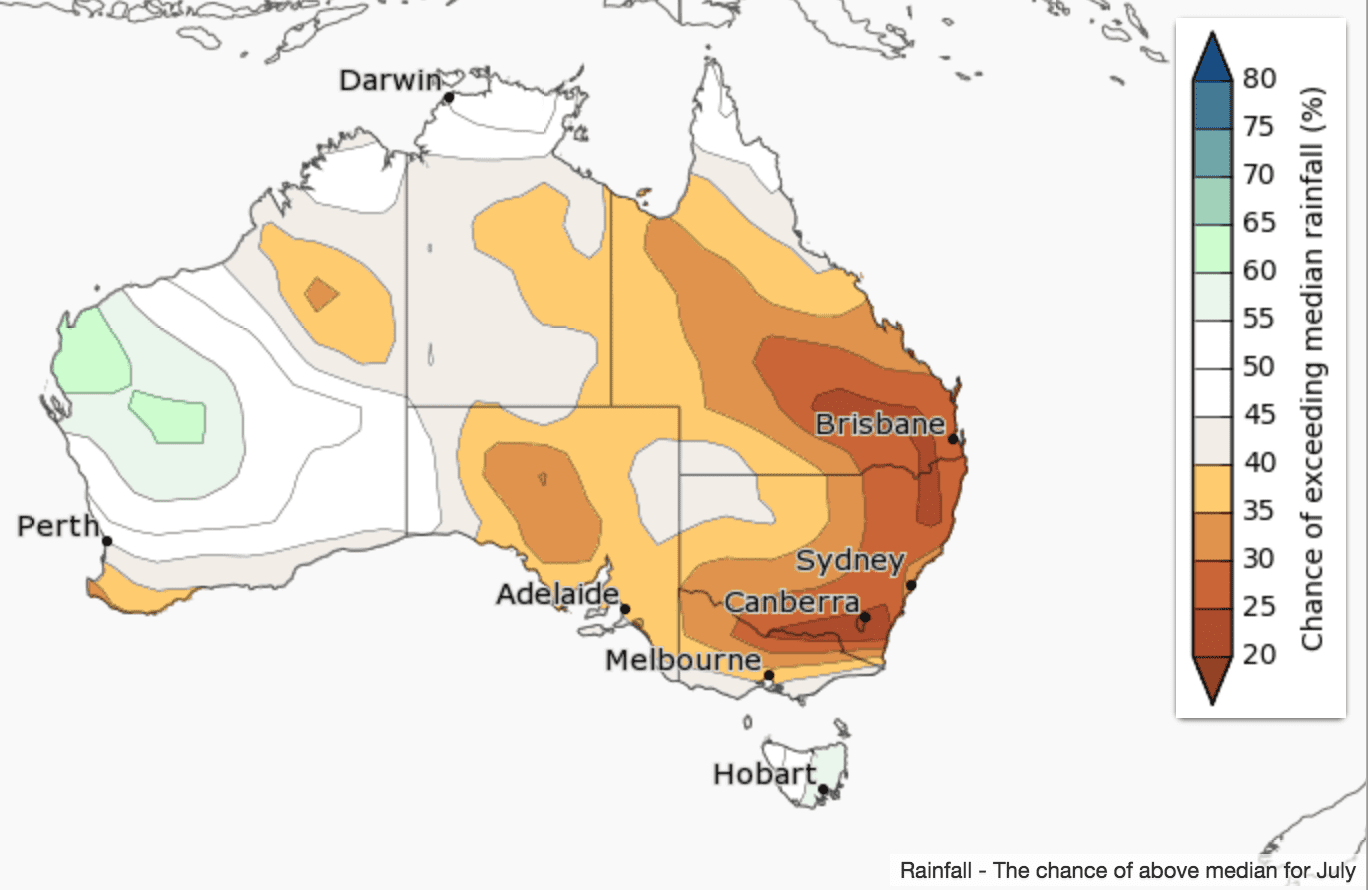
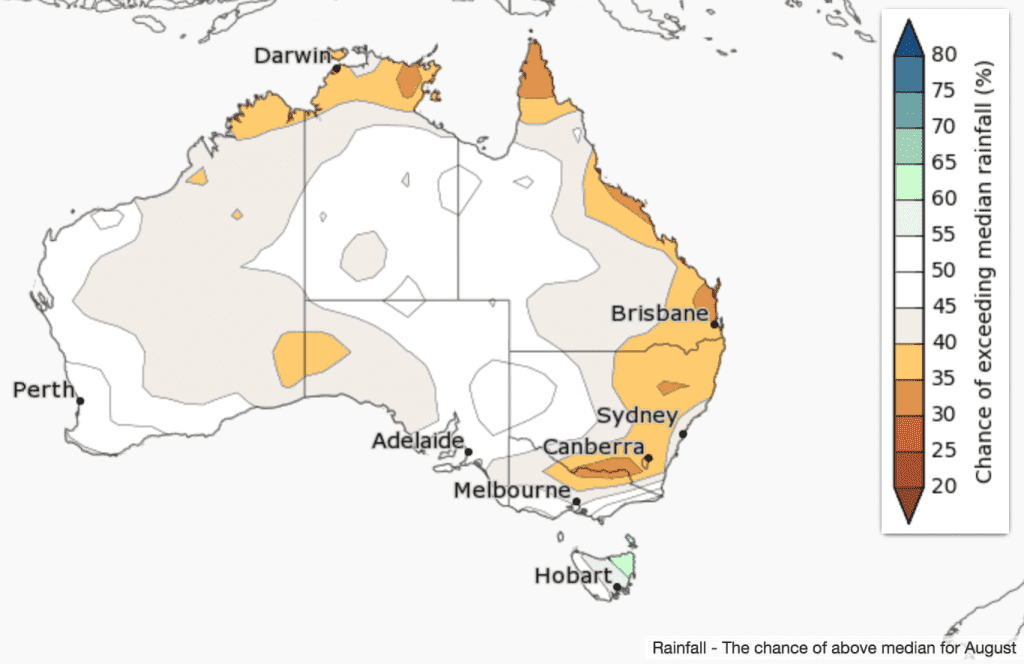
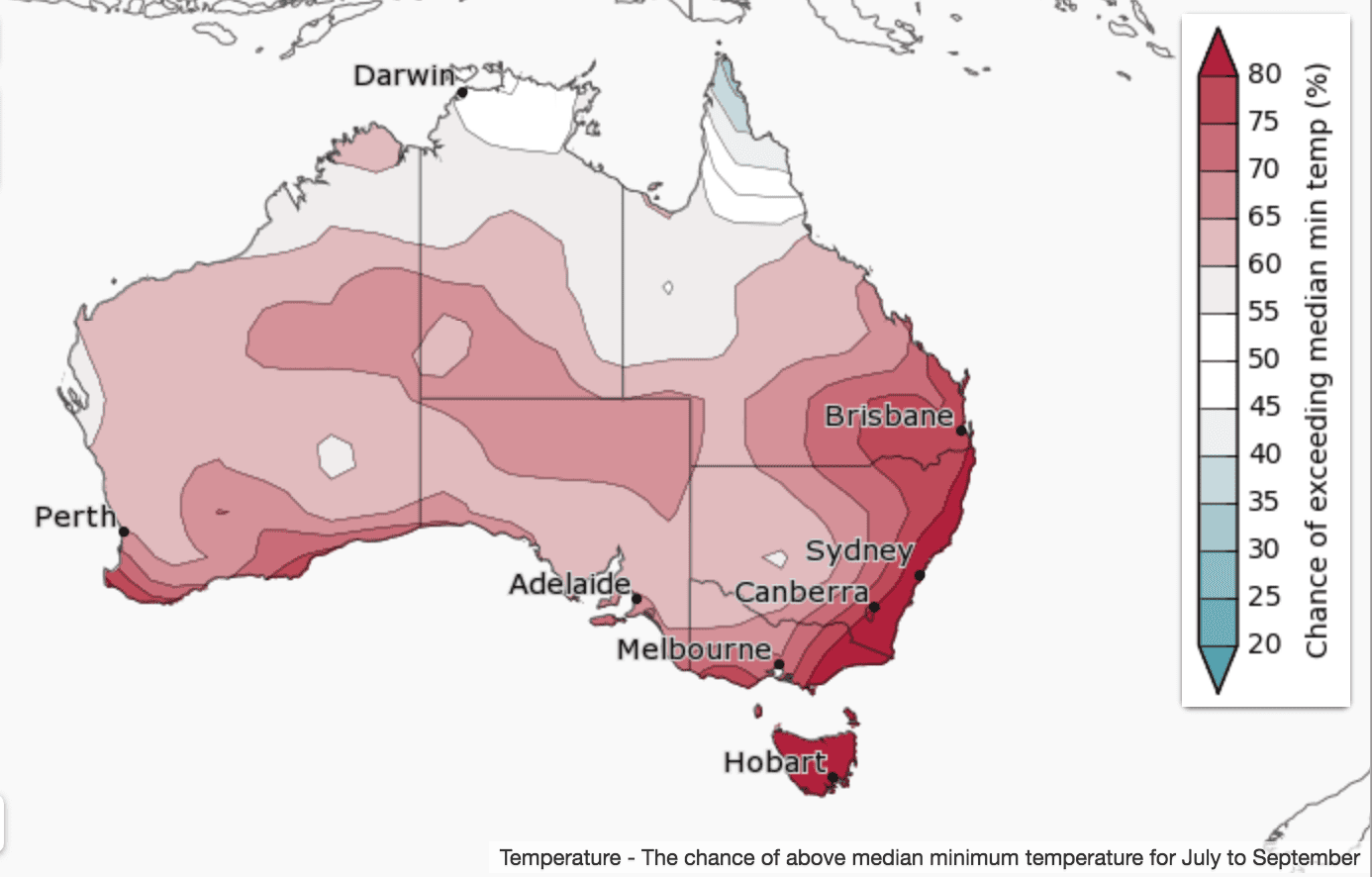
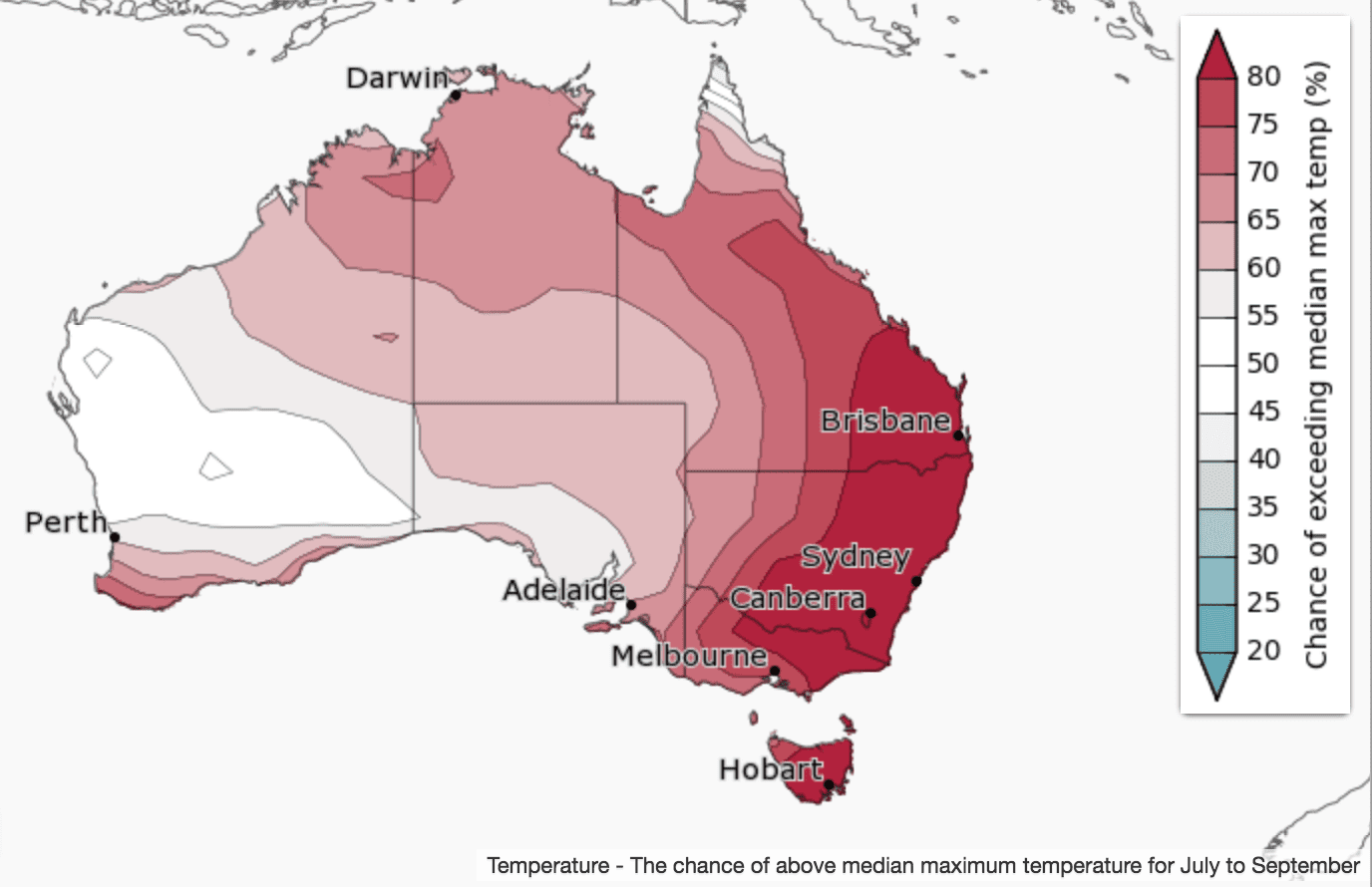
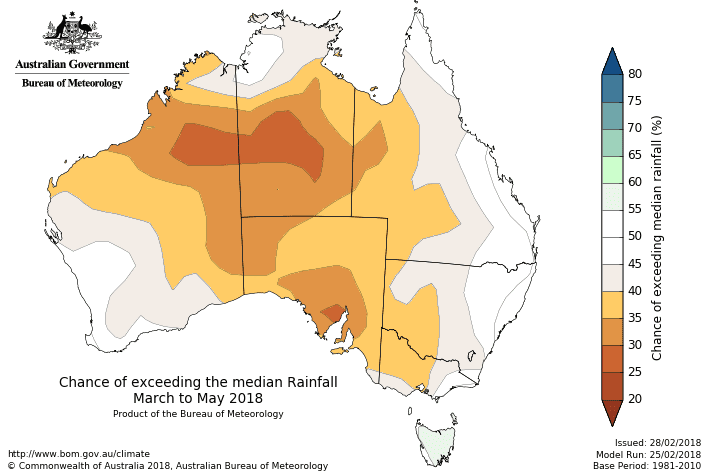
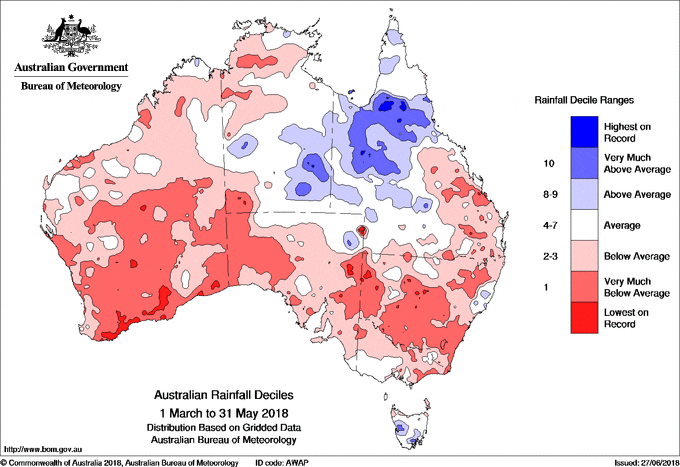


HAVE YOUR SAY